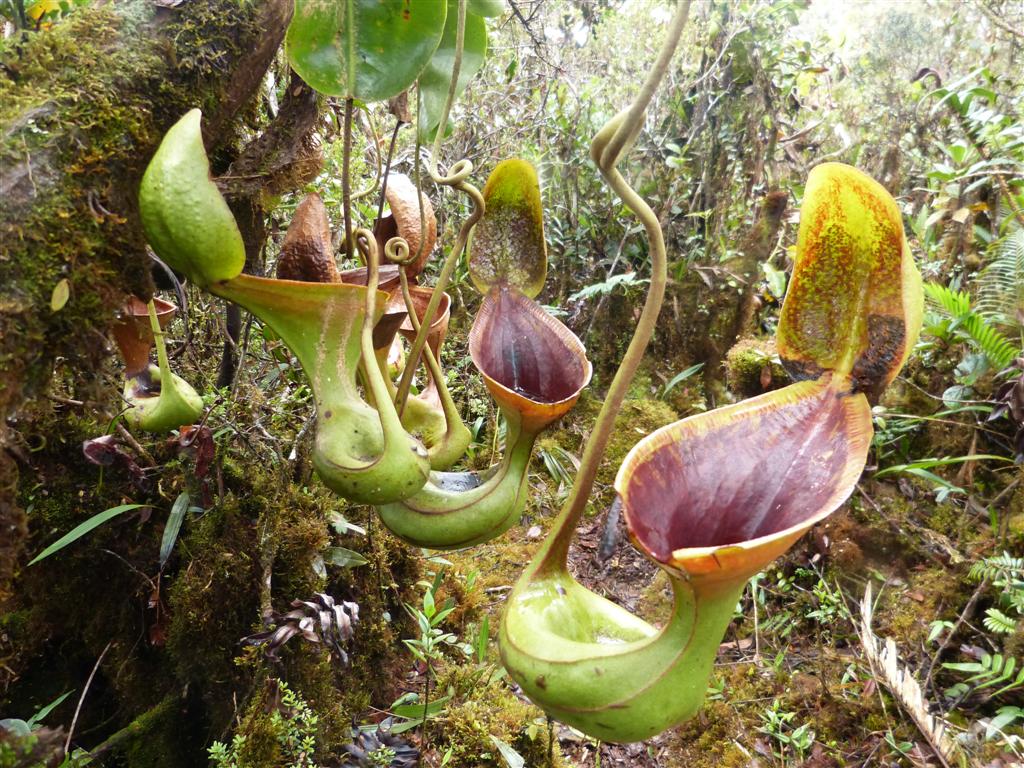Drosera aff. eremaea is after D. ramellosa and D. macrantha, the next species to be introduced to you. The aff. stands for species affinis. This means that the species has an affinity to, but is not identical to the species named. In this case I will show you a sundew that is, most likely, closely related to Drosera eremaea, though it is clearly different from the “true” D. eremaea.
Drosera eremaea is a tuberous sundew species related to D. macrantha and it has been considered as a subspecies of it. It’s habitat is formed by semi-arid areas (eremea is the Greek word for desert) in Western Australia with hot summers.

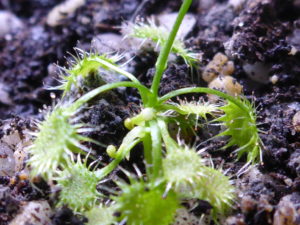
Drosera eremaea is a plant that is apparently not very common in cultivation. There seem to be some variability in this species. The typical from is an erect, usually pale green species, about 20 cm high with white or pink flowers. But there are also forms getting much taller than this:40 or even 60 cm.
This species can easily be recognized by the “pseudo rosette”. Grouped leaves can be found at the base of the stem with broadly elliptic, almost reniform leaves. Drosera eremae reproduces asexually by producing daughter tubers via adventitious stolons.
Drosera aff. eremaea in my collection
Well, so far the theory, let’s have a closer look at my plant. I obtained it about 2009, so this is one of the tuberous sundew species that I grow for the longest period over now. The plant, from Darren ‘Spot’ Cullen in Tasmania, is obviously different from the typical Drosera eremaea so therefore I consider it as D. aff eremaea. Unfortunately Darren does not know the origin of the plant. Like D. eremaea my D. aff. eremaea is pale green and forms a kind of a pseudo rosette and the entire stem is covered with minute glands. But in many other aspects it clearly differs from the typical form. Drosera aff. eremaea is a scrambling plant about 50 – 60 cm tall and in all these years I have not seen any adventitious stolon formation at all.
The odd thing about the D. aff eremaea that I grow, is the formation of additional leaves in many nodes. Where other erect or climbing species produce sets of 1 – 3 leaves in a node, my plant often, especially in the lower part of the stem, my plants produce more. One extra set of three leaves (making it 5 or 6) or even 2 extra sets of leaves (making it up to 8 leaves in a node) are quite often produced. Occasionally also small branches are produced.
Another diagnostic feature is the presence of tiny glands at the back side of some of the leaves especially closer to the top. This plant is one of the first tubers to awake in the season (after D. macrantha “rock outcrop form”) but is also the first on to die back.

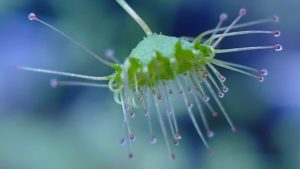
It took a few years, but since I switched from T5 tubes to LED lights, I got the growing conditions right for this odd plant. Now I got it flowering for the second year in succession. The flowers are whitish with a faint pink coloration and about 3 cm in diameter.
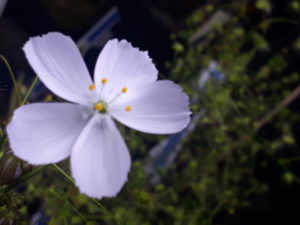
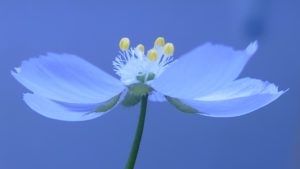
Another reaction of the plant is that it now produces daughter tubers, subterranean and not via stolons.
Now I have ordered another D. (aff) eremaea from Allen Lowrie (a dark pink, 60 cm tall form), I am curious how different or similar this plant will be from the one I grow. Perhaps I can get my hands at another D. eremaea plant next summer.
